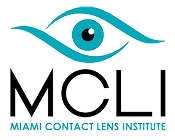Dry eye disease is a common condition thataffects millions of people worldwide. The disease is characterized byinsufficient ocular lubrication, resulting in persistent discomfort, visualdisturbances, and a lower overall quality of life. Patients often wonderwhether there is a way to cure their condition, so let’s discuss that questionto help you set realistic expectations for treatment and potential outcomes.
What Is Dry Eye?
Dry eye is a condition that occurs wheneyes don’t produce enough tears, or when the tears produced are of poorquality. Inadequate tear film can cause irritation, redness, pain, blurryvision, and a persistent gritty sensation. Dry eye may be triggered by specificfactors, in which case it can be a temporary condition. On the other hand, dryeye can become a chronic problem that lasts for an extended period.
What Triggers Dry Eye and What Are the Risk Factors?
Several factors may contribute to dry eyeand its associated symptoms. Age is a trigger because tear production decreasesnaturally over time. Due to this change, older adults are more likely to dealwith dry eye. Significant hormonal changes also affect tear production, so pregnantwomen or those on birth control or going through menopause may also experiencedry eye.
Exposure to environmental factors, such aswind, dry climates, smoke, or air conditioning, can accelerate tearevaporation, leading to dry eye. Prolonged contact lens wear can also disruptthe tear film and exacerbate dry eye symptoms. Individuals who spend hours perday using digital devices are more likely to develop dry eye syndrome due to areduced blinking frequency.
Medications like antihistamines,antidepressants, and blood pressure drugs can also decrease tear production.Additionally, chronic health conditions like autoimmune diseases, diabetes, andrheumatoid arthritis can contribute to the development of dry eye. When apatient presents with a few of these risk factors, they are likely toexperience dry eye.
What Treatments Are Available for Dry Eye?
Fortunately, a wide range of treatmentoptions is available for dry eye. From over-the-counter remedies to advancedmedical procedures, the goal of treatment is to alleviate symptoms, enhance eyehealth, and address underlying conditions.
Artificial Tears and Lubricating Drops
The first line of defense against dry eyeis usually artificial tears, which can be purchased without a prescription. Synthetictears can enhance natural tears to provide temporary relief from dry eyes.Lubricating gels and ointments can provide longer-lasting moisture, especiallywhen applied at night before bedtime. If these treatments don’t make asignificant change in your discomfort, your eyecare practitioner may recommendprescription medication.
Prescription Medications
When regular over-the-counter treatments donot resolve the issue, prescription medication may be necessary. Anti-inflammatoryeye drops such as cyclosporine and lifitegrast can stimulate tear productionand reduce inflammation. In more severe cases, your doctor may prescribecorticosteroid drops to control the inflammation.
Oral medication can also be beneficial for individualswith dry eye due to meibomian gland dysfunction. The meibomian glands are tinyoil glands located along the edge of the eyelids, right where your eyelashesare. These small glands are responsible for producing the lipid or oily layerof the tear film. When this layer is disrupted, the tears evaporate tooquickly. The proper balance of the watery, oily, and mucous layers in tears is crucialfor maintaining well-moisturized and comfortable eyes.
Specialty Contact Lenses
Scleral lenses are large-diameter rigidcontacts that rest on the white part of the eye (the sclera), instead of thecornea as regular soft contact lenses do. Scleral lenses have a small liquidreservoir on the posterior side that the user fills with a saline solution everyday. Wearing these lenses helps keep the ocular surface moist throughout theday, eliminating dryness and minimizing discomfort. Scleral lenses are alsocustom-made to fit each eye precisely for optimal comfort and vision.
Can Dry Eye Be Cured?
Whether dry eye can be cured or not dependson the underlying cause. For most people, dry eye is a chronic condition thatrequires ongoing management and treatment. Chronic dry eye is typically aresult of aging, hormonal changes, or autoimmune diseases.
Treatment for patients with chronic dry eyefocuses on relieving symptoms and preventing complications, as there iscurrently no permanent cure. Chronic dry eye may fluctuate, periodicallyimproving and worsening due to environmental factors.
Cases Where Dry Eye May Be Reversible
Dry eye may be reversible in somecircumstances. For example, if the condition is caused by a temporary factorsuch as medication, removing that trigger can resolve the issue. In situationswhere dry eye is related to environmental or behavioral factors, lifestylemodifications, such as less screen time, can lead to considerable improvementor even a complete reversal of the condition.
When dry eye is caused by allergies,infections, or temporary hormonal changes, the condition can often be reversedby treating the underlying problem. However, for most patients, especiallythose with underlying medical conditions, dry eye is typically viewed assomething that can be managed, rather than cured.
Manage Dry Eye With Expert Support
Dry eye disease is a complex, often chroniccondition. While it may be resolved when caused by temporary triggers, mostpatients require ongoing management to alleviate symptoms.
If you’re experiencing persistent dry eye,contact Miami Contact Lens Institute to schedule a consultation. Our eye carepractitioners will perform a thorough examination to determine the severity ofyour condition and identify its cause. We will then develop a treatment plan tohelp alleviate the discomfort of your symptoms.

.jpg)
